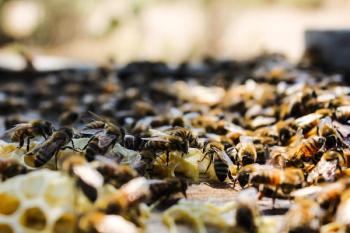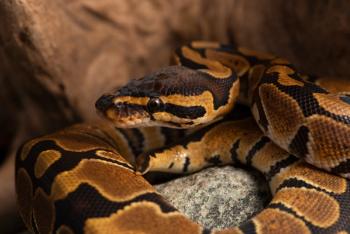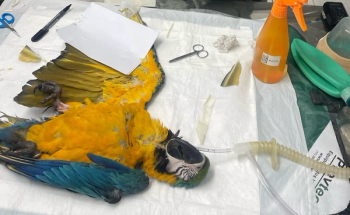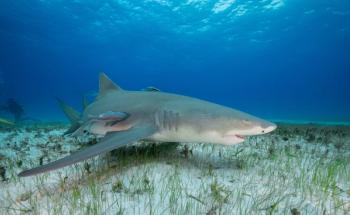
Recognizing and managing pain in small mammals (Proceedings)
Physiologic "stress" response to pain.
Physiologic "Stress" Response to Pain
- Vasoconstriction
-Increased Heart Rate and Stroke Volume
-Decreased GI & Urinary Tone
-Physiologic "Stress" Response to Pain:
-Endocrine Responses
-Nociceptive Stimulation of Brain
- Enhance Reflex Sympathetic Responses
-Immune Suppression
-Impaired Wound Healing
-Decreased Food & Water Intake
-Secondary Medical Problems
-Gastric ulcers GI Stasis
-Shock
-Death
• Higher rate of anesthetic death in exotics?
• Higher rate of death postoperatively?
How is this related to inadequate use of pre, intra & postoperative analgesics in prey species????? Stress???
Behaviors Associated with Pain in Small Mammals
-Predators such as ferrets are more likely to show overt signs of pain
-Prey species such as rabbits and guinea pigs are less likely to show overt signs of pain
-Half-closed/dull/unfocused eyes
-Aggressive when normally docile
-Pressing abdomen on the floor
-Immobility/Lethargy/Isolation
-Fewer, smaller or no fecal pellets
-Vocalization (squeal may be fear in rabbits)
-Increased frequency and depth of respirations or rapid shallow breathing
-Polyuria/Polydipsia (especially w/GI pain)
-Teeth grinding (bruxism) Lameness/Ataxia
-Reluctance to curl when sleeping (ferrets) Anorexia
-Stretching w/back arched Hunched posture
-Tucked appearance Chewing at affected site
-Strained facial expression w/bulging eyes Piloerection
-Head extended and elevated Stiff movements
-Stinting on palpation Self-mutilation
-Porphyrin secretion (stress) Squinting (especially ferrets)
Painful Disease Processes
Pain Management Considerations
- Pre-emptive analgesia
-Neuropathic Pain
-Inflammatory Pain
-Decreases dose of maintenance anesthetic
-Care with injectable anesthetics
-Individualize treatment and provide Multimodal Pain Therapy
-Numerous pain pathways
-Synergistic effect
-Analgesics often used at lower doses
-Anxiety lowers the pain threshold
-The effects of illness, restraint and environmental changes w/hospitalization increase the level of stress experienced.
-Never discount the owners concern - familiarity w/daily behavior is important in assessing pain.
-Train your staff to recognize pain in exotics
-Assign staff member to monitor patient throughout their hospitalization
NSAID's
-Don't use with renal and hepatic impairment, bleeding disorders, enteritis, gastritis, gastric ulcers hypotension or hypovolemia
-Don't combine with corticosteroids
-Use lower doses with ferrets
-Use with caution for prolonged use in herbivores, use gastric protectants
-Hypotension is often seen as an anesthetic complication in small mammals – use pre-op NSAIDS w/caution
Opioids
-Avoid use in hypotensive patients
-Short duration of action
-Decrease need for isoflurane
-Administer during lighter plane when also using injectable anesthesia
-Butorphanol – least potent and shortest duration
-Buprenorphine – intermediate strength and longest duration (6-8 hrs.)
-Morphine – most potent and intermediate duration
-Oral buprenorphine (transmucosal) has been found pharmacologically effective in cats and more recently dogs (abstract from ACVA mtg). Clinically effective in rabbits and ferrets.
-Pica has been noted in rats on buprenorphine
-Ferrets can be prone to side effects including hypotension, sedation and respiratory depression
-Guinea pigs, rabbits, chinchillas can be prone to side effects associated with the GI tract.
Analgesics for Small Mammals
NSAIDS
-Acetylsalicylic Acid - 50 to 100 mg/kg q 8 - 24 h PO
-Carprofen - 1 to 4 mg/kg q 12 to 24 h PO, SQ, IM
-Flunixin meglamine - 0.1 to 2 mg/kg q 12 -24 h SQ, IV, IM (herbivores)
-Piroxicam – 0.2 mg/kg PO q 8 h
-Ibuprofen - 2 to 7.5 mg/kg q 4 to 24 h IM, PO
-Ketoprofen - 1 to 3 mg/kg IM, SQ, PO q 24 h
-Meloxicam - 0.1 to 0.2 mg/kg q 24 hr SQ, PO
-Meloxicam (Metacam)
-6 to 8 hrs to reach blood levels so use well before procedure for post-op pain
-Possibly d/t rapid metabolism higher doses may be needed in rabbits/rodents
0.3 mg/kg/day PO in rabbits (Turner, et al)
1-2 mg/kg pre-op in rats (to achieve post-op pain) (Roughan and Flecknell)
-Ferrets can be more sensitive to NSAID side effects so be more cautious w/dose (similar to cats)
-Do not use in ferrets if ulcers are suspected or if vomiting/diarrhea or melena are present
-Bloodwork to R/O liver/kidney disease
Opioids
-Butorphanol - 0.1 to 0.5 mg/kg q 4-6 h SQ, IV, IM
-Buprenorphine - 0.01 to 0.1 mg/kg q 6 to 12 h SQ, IM, IV
-Tramadol (syn. Analogue of codeine) – less side effects than opiods.
-Pharmacological studies indicated 10 mg/kg safe in rabbits (TBB uses 3 mg/kg)
-Can decrease blood glucose levels
-Morphine - 1.25 to 5 mg/kg q 2-4 h SQ, IM
-Oxymorphone 0.05 to 0.2 mg/kg q 4-12 h SQ, IM
Combining NSAIDS and Opiods provides multimodal analgesia (usually at lower dosages) with less side effects.
Local Analgesia
-Lidocaine 2% - 1 mg/kg (can be used in combo with bupivicaine for longer analgesia)
-Bupivicaine 0.5% - 1 mg/kg (can be used in combo with lidocaine for longer analgesia)
-Cetacaine on wounds from maggots and on incisions if chewing postoperatively
Nerve Blocks
Epidural Analgesia
Lidocaine 1.5% 0.4 ml/kg
Fentanyl
• 0.0074 mg/kg IV
• 0.15 to 0.44 ml/kg IM (can cause muscle necrosis)
Fentanyl Patches
• Rabbits: 1/3 to 1/2 patch per 3 kg rabbit X 3 days
Alternative Approaches to Pain Management
-Acupuncture
-Massage Therapy
-Chiropractic
-Physiotherapy
-Cranioelectrical Stimulation (CES)
-Alpha Stim TM
-Uses a biphasic square electrical wave
-Rx for pain, anxiety, depression and insomnia
-Current studies in amputees & breast cancer patients
-Pain, Wound Healing, Anxiety in animals
-Alternative Approaches to Pain Management
-Produces the alpha state within the body's electrical activity pattern
-Calmness, mental focus, pain control
-Disregulation of firing patterns in the brain responsible for behavioral anomalies:
-depression, anxiety, insomnia. addictions, OCD, etc.
Microcurrent Electrical Therapy (MET)
-Electrical current stimulates healing and growth and regeneration
-Initiates and sustains chemical & electrical relations in the healing process
-Bacteria do not like the microcurrent
Injury causes a change in polarity that is reestabished with MET
Assessment of Response to Analgesics
Return to Normal Behavior:
• Eating
• Sleeping
• Stretching
• Grooming
Always sedate or preferably anesthetize small mammals before euthanasia
Newsletter
From exam room tips to practice management insights, get trusted veterinary news delivered straight to your inbox—subscribe to dvm360.






